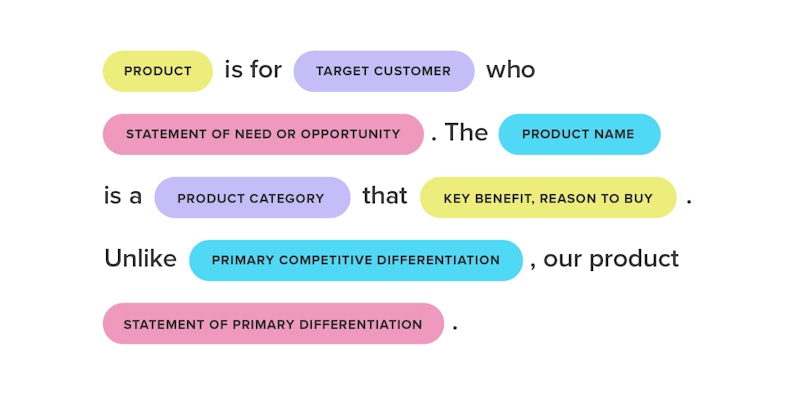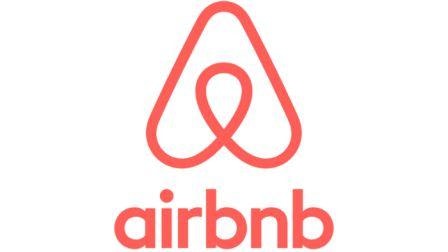What is a Product Vision Template? (With Examples)
A product vision template is a tool that helps you define and communicate your product's long-term direction. It's a crucial element in product development that guides your team towards a shared goal.
Key Components of a Product Vision Template
1. Future State:
Your template should capture the desired future state of your product. For example, you might envision your product becoming "the ultimate choice for gluten-free living" or "revolutionizing mobility for wheelchair users."
2. Time Frame:
Typically, a product vision looks 2-5 years ahead, depending on your industry and product lifecycle. Your template should accommodate this long-term perspective.
3. Purpose:
Your vision template needs to articulate WHY your product exists, not HOW you'll achieve your goals. This distinction is crucial for effective product planning.
For a comprehensive understanding of how product vision aligns with your roadmap, check out our article on Product vision and roadmap
Why Use a Product Vision Template?

Some product managers overlook creating a vision, thinking it's just a set of unrealistic statements. However, this approach can be detrimental to your product's success.
A well-crafted product vision template allows you to:
Define clear product goals
Devise a solid strategy to achieve these goals
Develop tactics to implement your strategy
Break down your vision into daily tasks
Your product vision template should be concise yet powerful. It's not about detailing every feature, but about painting a compelling picture of your product's future impact.
If you're curious about the differences between product vision and strategy, our detailed comparison in Product vision vs product strategy will provide valuable info.
Importance of a Clear Product Vision
Having a clear product vision is crucial for your product's success. It serves as a guiding light for your entire team and stakeholders. Let's explore why it's so important:
1. A Good Product Vision Provides Direction
Your product vision acts as a compass for your team. It helps everyone understand where you're headed, ensuring all efforts align with the long-term goals. Without a clear vision, your team might lose focus or work on initiatives that don't contribute to the product's ultimate purpose.
2. An User Centric Product Vision Inspires and Motivates
A well-crafted vision has the power to inspire. It gives your team a sense of purpose, showing them how their work contributes to something bigger. This motivation can lead to increased productivity and innovation.
3. A Clear Product Vision Helps in Decision-Making
When faced with tough decisions, your product vision becomes invaluable. It helps you prioritize features, allocate resources, and make strategic choices that align with your long-term goals.
4. A Focused Vision Facilitates Communication
Your product vision serves as a communication tool. It helps you articulate your product's purpose to stakeholders, potential customers, and new team members. A clear vision makes it easier to get buy-in and support for your product initiatives.
5. A Forward-thinking Product Vision Drives Innovation
By setting a bold vision, you encourage your team to think creatively. It challenges them to find innovative solutions to reach that ambitious future state you've defined.
6. A Good Product Vision Maintains Focus
In the fast-paced world of product development, it's easy to get distracted by new trends or competitor moves. Your product vision keeps you focused on what truly matters for your product's success.
Learn about the role of product vision in agile methodologies by reading our guide on what is product vision in Scrum.
What is a Product Vision Template?
A product vision template is a structured framework that helps you articulate and document your product's long-term direction. It's a tool that enables you to capture the essence of your product's future in a clear, concise manner.
How to Create a Vision
Creating a product vision involves several steps:
1. Gather Input:
Collect information from stakeholders, customers, and your team. Their perspectives will help shape a comprehensive vision.
2. Identify Core Purpose:
Define why your product exists.
What problem does it solve?
How does it improve users' lives?
3. Look to the Future:
Envision where you want your product to be in 2-5 years. Think big, but remain realistic.
4. Draft Your Vision:
Write a concise statement that captures your product's future state and core purpose.
5. Refine and Validate:
Share your draft version with key stakeholders and refine it based on feedback.
The 7 Core Components of a Product Vision Template

A Clear product vision template typically includes these elements:
1. Target Audience:
Clearly define who your product serves. Be specific about your ideal users or customers.
2. Need Statement:
Articulate the primary need or problem your product addresses. What pain point are you solving?
3. Product Category:
Specify what category your product falls into. This helps set the context for your vision.
4. Key Benefits:
Highlight the main advantages your product offers. How does it improve users' lives or work?
5. Primary Differentiator:
Identify what sets your product apart from competitors. What's your unique value proposition?
6. Future State:
Describe the ambitious yet achievable future you envision for your product.
7. Business Goals:
Include high-level business objectives your product aims to achieve.
Your product vision template should be adaptable to your specific needs. You might not need all these elements, or you might want to add others. The key is to create a template that helps you articulate a clear, inspiring vision for your product's future.
For practical tips on creating a compelling product vision, don't miss our product vision workshop article.
Benefits of Having a Clear Product Vision Template

A product vision template offers numerous advantages for your product development process. Let's take a look at the key benefits:
1. Enhancing Team Alignment
A product vision template helps align your team toward a common goal. Here's how:
Shared Understanding: The template ensures everyone has the same vision of the product's future.
Clear Direction: It provides a north star for all team members, guiding their daily decisions and actions.
Consistent Focus: With a well-defined vision, your team can prioritize tasks that contribute directly to the product's long-term goals.
2. Streamlining Product Development
A product vision template can significantly improve your development process:
Efficient Decision-Making: When faced with choices, your team can refer to the vision to make decisions that align with the product's ultimate purpose.
Faster Iterations: A clear vision helps you identify and focus on the most important features, leading to quicker development cycles.
Reduced Scope Creep: The template acts as a filter, helping you avoid unnecessary features that don't contribute to the vision.
3. Improving Stakeholder Communication
Effective communication with stakeholders is crucial, and a product vision template can help:
Concise Messaging: The template provides a clear, concise way to communicate your product's direction to investors, executives, and partners.
Easier Buy-In: A well-articulated vision makes it easier to get stakeholder support for your product initiatives.
Consistent Narrative: The template ensures you present a consistent story about your product's future across all stakeholder interactions.
The benefits of a product vision template extend beyond these points. It can also boost team motivation, drive innovation, and help you stay focused in a rapidly changing market.
Explore effective techniques to enhance your strategic planning with our strategy workshop exercises guide.
The Elements of a Good Product Vision Template

An effective product vision template consists of several key components. Each element plays a crucial role in defining your product's future direction. Let's explore these components:
1. Vision Statement
Your vision statement is the core of your product vision template. It should:
Clearly articulate your product's long-term goal
Be concise, typically one or two sentences
Inspire and motivate your team
Provide a clear picture of your product's future impact
2. Target Audience
Defining your target audience helps focus your product development efforts. Include:
Demographic information of your ideal users
Their needs, pain points, and desires
Behavioral characteristics relevant to your product
3. Market Needs
Identify the specific market needs your product addresses:
What problems does your product solve?
How does it improve users' lives or work?
What gap in the market are you filling?
4. Product Benefits and Features
Outline the key features and benefits of your product:
Focus on the most important features that align with your vision
Highlight the benefits these features provide to users
Show how these features address the identified market needs
5. Unique Selling Proposition (USP)
Your USP sets your product apart from competitors:
Clearly state what makes your product unique
Highlight the main value proposition for users
Explain why users should choose your product over alternatives
6. Success Metrics
Define how you'll measure the success of your product vision:
Identify key performance indicators (KPIs) aligned with your vision
Set measurable goals for these metrics
Include both short-term and long-term success criteria
Your product vision template should be personalized to your specific needs. You might need to adjust these components or add others based on your product and industry.
By including these components in your product vision template, you create a comprehensive framework for your product's future. This template will guide your decision-making, align your team, and communicate your product's value to stakeholders.
Use this template as a living document. Revisit and refine it regularly to ensure it stays relevant as your product evolves and market conditions change.
How to Create an Effective Product Vision Template

Creating an effective product vision template is crucial for guiding your product's development. Let's break down the process into manageable steps and explore best practices and common pitfalls.
Step-by-Step Guide
1. Gather Information
Conduct market research
Collect insights from stakeholders and customers
Analyze competitor products
2. Define Your Target Audience
Identify your ideal users
Understand their needs and pain points
3. Articulate Your Vision Statement
Craft a concise, inspiring statement
Ensure it aligns with your company's overall mission
4. Identify Market Needs
List the key problems your product solves
Explain how it improves users' lives or work
5. Outline Product Benefits
Focus on core features that support your vision
Highlight the benefits these features provide
6. Develop Your Unique Selling Proposition
Identify what sets your product apart
Articulate your main value proposition
7. Establish Success Metrics
Define key performance indicators
Set measurable goals aligned with your vision
8. Review and Refine
Share your draft with key stakeholders
Iterate based on feedback
Best Practices For Product Vision
Keep your vision concise and easy to understand
Ensure alignment with your company's overall strategy
Make your vision ambitious yet achievable
Use clear, jargon-free language
Involve key stakeholders in the creation process
Regularly review and update your vision as needed
Product Vision Template : Common Pitfalls to Avoid
Being Too Vague: Your vision should provide clear direction
Focusing on Features: Emphasize benefits and value, not just features
Ignoring Market Realities: Ensure your vision is grounded in market research
Making It Too Complex: A complicated vision is hard to communicate and follow
Not Getting Buy-In: Failing to involve key stakeholders can lead to lack of support
Setting Unrealistic Goals: Your vision should be ambitious but achievable
Neglecting to Update: Your vision should evolve as your product and market change
This template will serve as a powerful tool for aligning your team, guiding development, and communicating your product's value.
Examples of Product Vision Templates
To help you better understand how to create and use a product vision template, let's look at some sample templates and case studies. These examples will illustrate how different companies have effectively articulated their product visions.
Sample Product Vision Templates
1. The Elevator Pitch Template
[Product Name] is for [target customer]
who [statement of need or opportunity].
[Product name] is a [product category]
that [statement of key benefit].
Unlike [primary competitive alternative],
our product [statement of primary differentiation].
2. The Product Vision Board
- Target Group: [Who are your customers?]
- Needs: [What problems does your product solve?]
- Product: [What is your product? What are its key features?]
- Business Goals: [How will your product benefit the company?]
- Vision: [What is the ultimate purpose of your product?]
3. The Lean Canvas
This template includes sections for:
Problem
Solution
Key Metrics
Unique Value Proposition
Unfair Advantage
Channels
Customer Segments
Cost Structure
Revenue Streams
Product Vision Template : Case Studies
1. Spotify

Vision: "To be the world's leading audio platform."
This concise vision statement guides Spotify's expansion beyond music into podcasts and other audio content. It aligns their team around a broader goal while maintaining focus on their core strength in audio.
2. Amazon (in its early days)

Vision: "To be Earth's most customer-centric company, where customers can find and discover anything they might want to buy online."
This vision drove Amazon's expansion from books to a vast array of products, always keeping customer satisfaction at the forefront.
3. Tesla

Vision: "To accelerate the world's transition to sustainable energy."
Tesla's vision goes beyond just making electric cars. It guides their expansion into solar energy and battery technology, aligning all their products under a unified purpose.
4. Airbnb

Vision: "Belong anywhere."
This simple yet powerful vision statement drives Airbnb's focus on creating unique, local experiences for travelers, rather than just providing accommodations.
These examples show how effective product visions can vary in format and detail, but they all provide clear direction and inspiration. When creating your product vision template, choose a format that best suits your product and company culture.
Remember, the most effective product visions are those that inspire your team, guide decision-making, and communicate your product's value and direction to stakeholders.
Tools and Resources for Product Vision Templates

Creating and maintaining your product vision becomes easier with the right tools. Let's explore some software and resources that can help you craft and communicate your product vision effectively.
Product Vision Template: Software and Tools
1. Miro
Features: Digital whiteboard, templates, real-time collaboration
Benefits: Great for visual brainstorming and creating product vision boards
Use case: Ideal for remote teams to collaborate on vision creation
2. Aha!
Features: Product road mapping, goal setting, strategy tools
Benefits: Helps link your vision to concrete product plans
Use case: Useful for larger teams managing complex products
3. ProductPlan
Features: Roadmapping, planning, and collaboration tools
Benefits: Enables you to create visual roadmaps aligned with your vision
Use case: Effective for communicating vision and plans to stakeholders
4. Trello
Features: Kanban-style boards, checklists, team collaboration
Benefits: Simple and flexible for organizing vision elements
Use case: Great for smaller teams or startups creating initial vision drafts
5. Asana
Features: Project management, goal tracking, team collaboration
Benefits: Helps align tasks and projects with your product vision
Use case: Useful for tracking progress towards vision-aligned goals
6. Google Docs/Sheets
Features: Real-time collaboration, commenting, version history
Benefits: Accessible and familiar to most team members
Use case: Good for drafting and iterating on vision statements
Always keep in mind that the tool itself doesn't create the vision—it's just a facilitator. The most important aspects are the thought process, team input, and clear articulation of your product's future direction.
Experiment with different tools to find what works best for your team. Many of these offer free trials, allowing you to test them before committing.
Ultimately, the best tool is one that helps you create, communicate, and maintain your product vision effectively, keeping your team aligned and focused on your long-term goals.
Final Thoughts on the Importance of a Product Vision Template
A product vision template is more than just a document—it's a powerful tool that can drive your product's success. Here's why it's crucial:
Provides Direction: In the fast-paced world of product development, a clear vision keeps your team focused on long-term goals.
Inspires Innovation: A well-crafted vision challenges your team to think creatively and push boundaries.
Helps in Decision-Making: When faced with tough choices, your vision serves as a guiding light, helping prioritize features and allocate resources effectively.
Unifies Your Team: A shared vision creates a sense of purpose, boosting motivation and collaboration.
Communicates Value: Your vision helps articulate your product's unique value to stakeholders, investors, and customers.
As markets evolve and you gain new information, don't hesitate to revisit and refine your vision. The most effective product leaders use their vision as a living document, ensuring it remains relevant and inspiring.
It's an investment that will pay dividends throughout your product's lifecycle, keeping your team aligned, your development focused, and your stakeholders engaged.
So, take the time to craft a compelling product vision. Use the templates, tools, and tips we've discussed to create a vision that truly captures the essence of your product's potential.
FAQs:
1. What is a successful product vision template?
A successful vision statement inspires employees and guides an organization's efforts. It motivates both employees and customers to invest in the company's journey towards its goals. It should be inspiring and provide clear direction for the future of the product or company.
2. How do you write a product vision?
To create a product vision, start by explaining the motivation behind the product. Clearly distinguish between the product itself and its vision. Keep the strategy separate from the vision. Secure stakeholder approval for your vision. Remember to think big, inspire, and be concise in your statement.
3. Is there a template for a product vision statement?
Here's a popular template: "[Product] is for [Target Customer] who [Statement of need or opportunity]. The [Product Name] is a [Product Category] that [Key Benefit, Reason to Buy]. Unlike [Competitor], our product [Statement of primary differentiation]."
4. What are the steps for creating product vision?
The key steps in developing a product vision are: Listen to understand your customers and their needs. Distill your findings into a concise statement of your product's value. Unify by championing the product vision as a product manager. Finally, document the vision for reference and alignment.
5. Who creates product vision?
The Product Owner is typically responsible for creating, managing, and owning the product vision. This vision outlines the product's purpose, the intention behind its creation, and what it aims to achieve for customers and users.





